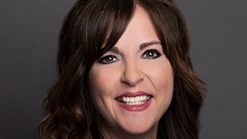Now, though, in what an FHA spokesman told me is “the single most comprehensive proposed set of updates to the program in at least a decade,” the agency wants to put 203(k) back on the map. To account for today’s higher repair costs, for example, FHA plans at this writing to more than double the limit on allowable rehab costs from $35,000 to $75,000 in high-cost markets and to $50,000 everywhere else.
To account for the longer construction periods now common with major repairs, it wants to extend the allowable rehab timeline from six to 10 months for major projects and from six to seven months for the so-called “limited” program, which can be used only for minor renovations and no-structural repairs.
Also on the agenda, the allowable initial draw would be raised from 50% of material costs to 75% to account for higher building product prices. And consultation fees, which often run as high as $2,000, could be included in the mortgage amount for the limited program, as they already are for the standard program.
Improvements Not Lacking
It’s hard to think lenders would find these improvements lacking. After all, the proposal reflects input the agency has already received from the business over most of last year While some maintain the changes don’t go far enough, most agree they’re going to give the flagging program the boost it deserves.
Jim Bopp, vice president of renovation lending at Planet Home Lending, expects them to go a long way toward making heretofore un-sellable houses more attractive. The “long overdue” improvements open up inventory that people can buy at a discount because the house is not in move-in condition, fix it up, and be well on their way to home ownership, says Bopp. “They allow solid houses with good bones to be put back into good use.”
Jeff Leinan, co-president of Plaza Home Mortgage, is a big fan of the program, too. And he thinks more lenders ought to embrace it. Not just lenders but also real estate agents. “More borrowers would opt for 203(k) financing if it was presented to them as an option,” Leinan says. “It’s a great opportunity for people to purchase a house and get the financing they need to remodel at the same time. And Realtors don’t market it enough, either. Some people just don’t have enough vision to imagine how the program can work.”
That the program “has not kept up with the times” is unfortunate, Sean Faries, CEO of Land Gorilla, laments, noting that the decline in 203(k) volume is “unbelievable.” He, too, admonishes lenders for not utilizing a program he sees as “10 times” better than Fannie Mae’s HomeStyle program, its chief renovation product.
But even though Department of Housing and Urban Development Secretary Marcia Fudge says the “enhancements” will make home rehab “more accessible for millions” of borrowers, the lenders interviewed for this story say the FHA could have — and should have — gone further.
Land Gorilla’s Faries, for example, would like to see the government loosen the rules. While he lauds the FHA for making the alterations noted here, he feels it has “fallen short” in making those necessary for 203(k) to really be successful. “It has such great potential. But compared to other renovation programs,” he laments, “it is overly complicated. None of the others have a fraction of the detail FHA has, but they go a lot smoother.”
In particular, Faries would like to see the agency allow lenders to bring the all-important consultant’s function in-house. Right now, the FHA manages its list of independent consultants, who act as its eyes and ears on the ground, protecting the borrower, the lender, and the government. But, says Faries, “almost all other renovation loan programs do it in-house, and so should 203(k).”
Consultants Needed
Consultants are on Bopp’s list of additional changes he’d like to see, too. At the height of the program, there may have been 2,500 203(k) consultants nationwide. Now, there’s “not even” 900. So the veteran renovation loan professional says he’s “curious” to see what, if any, plans the FHA has in mind to bring on more consultants and better train them.
Also on the Planet Home Lending executive’s wish list: An increase in construction timelines to 12 months and allowing investors back into the program. Investors were suspended more than 25 years ago. But if the FHA were to lift the suspension, Bopp says, professionals could purchase the houses that are so far gone that most home buyers are incapable of tackling on their own.













